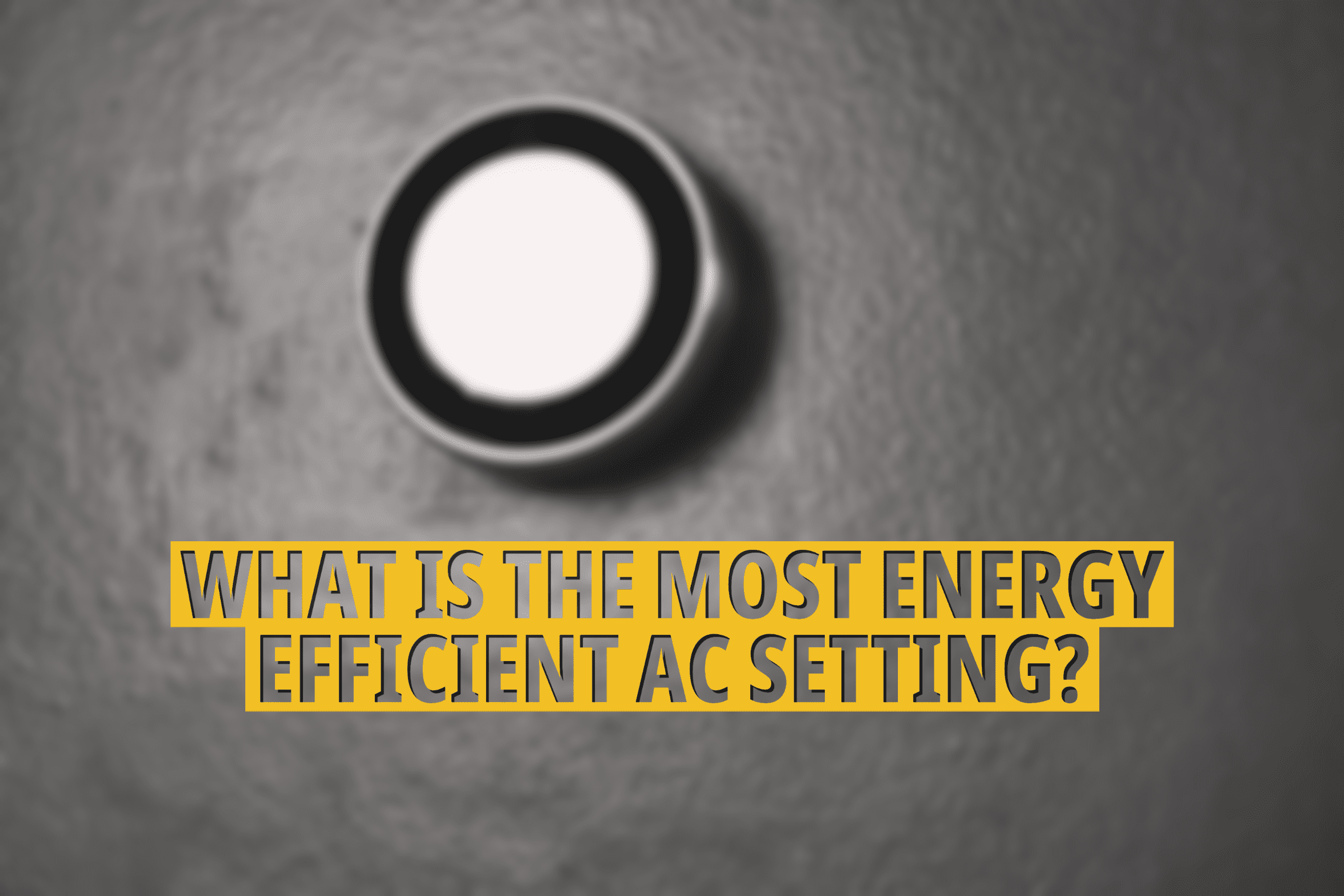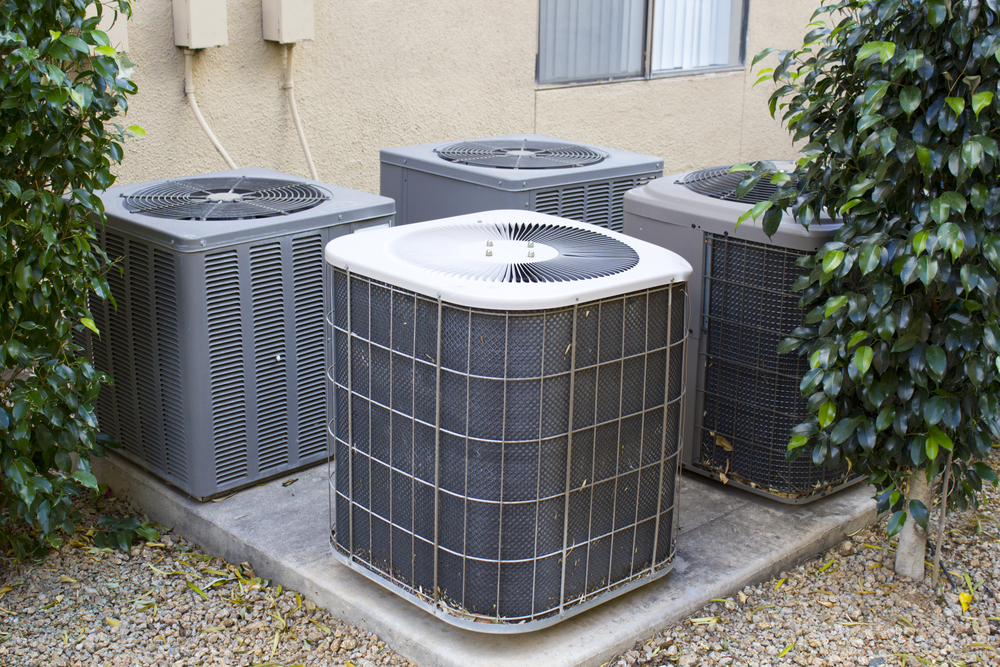Most Energy Efficient Temperature For Ac

Finding the most energy-efficient temperature for your air conditioning isn't just about comfort; it's about saving money and reducing your environmental impact. This guide will explore optimal AC temperatures, factors affecting energy consumption, and how to choose the right HVAC system for your needs.
Understanding Energy Efficiency Ratings: SEER, EER, and More
Before diving into specific temperature settings, it's crucial to understand the ratings that determine an AC unit's efficiency. Key metrics include:
- SEER (Seasonal Energy Efficiency Ratio): Measures the cooling efficiency of an AC unit over an entire cooling season. Higher SEER ratings indicate greater efficiency. Modern AC units typically have SEER ratings between 13 and 28.
- EER (Energy Efficiency Ratio): Measures the instantaneous cooling efficiency of an AC unit at a specific operating point. Useful for comparing units under consistent conditions.
- HSPF (Heating Seasonal Performance Factor): Specifically for heat pumps, HSPF measures heating efficiency. Higher HSPF ratings are better.
- AFUE (Annual Fuel Utilization Efficiency): Measures the efficiency of furnaces and boilers. This is less relevant to AC but crucial when evaluating overall home heating and cooling systems.
When selecting a new AC unit, prioritize models with high SEER ratings to maximize energy savings. Keep in mind that higher SEER units often have a higher upfront cost but will save you money in the long run.
The Goldilocks Zone: Optimal AC Temperature for Energy Efficiency
While personal comfort varies, experts generally recommend setting your thermostat to 78°F (26°C) when you’re home and need cooling. This temperature provides a balance between comfort and energy conservation.
When you're away from home, raising the thermostat even higher can significantly reduce energy consumption. Consider setting it to 85°F (29°C) or even higher. Smart thermostats can automate this process, adjusting the temperature based on your schedule.
For sleeping, a slightly cooler temperature, around 72-75°F (22-24°C), often provides optimal comfort. Programmable thermostats allow you to set different temperatures for different times of the day, ensuring comfort without wasting energy.
Factors Influencing Optimal Temperature
Several factors can influence the ideal AC temperature for your home:
- Climate: Residents in hotter climates may need to set their thermostats lower to maintain comfortable temperatures.
- Insulation: Homes with poor insulation will require more energy to maintain a consistent temperature, potentially leading to higher energy bills.
- Sun Exposure: South-facing rooms with large windows will typically require more cooling than other areas of the house.
- Personal Preference: Ultimately, comfort is subjective. Find a temperature that works for you and your family while balancing energy efficiency.
Smart Thermostats: A Game Changer for Energy Savings
Investing in a smart thermostat is a smart move for homeowners looking to optimize energy consumption. These devices offer numerous benefits:
- Programmable Schedules: Set different temperatures for different times of the day, ensuring comfort when you're home and saving energy when you're away.
- Remote Control: Adjust your thermostat from anywhere using your smartphone or tablet.
- Learning Capabilities: Some smart thermostats learn your habits and automatically adjust the temperature based on your preferences.
- Energy Monitoring: Track your energy usage and identify areas where you can save money.
Popular smart thermostat brands include Nest, Ecobee, and Honeywell. These devices often integrate with other smart home systems, providing seamless control over your home's environment.
Choosing the Right AC Unit: Key Features and Considerations
Selecting the right AC unit is crucial for energy efficiency and comfort. Here are some key features to consider:
- Size: An undersized unit will struggle to cool your home effectively, while an oversized unit will cycle on and off frequently, wasting energy. Consult with an HVAC professional to determine the appropriate size for your home, typically measured in BTUs (British Thermal Units).
- Type: Options include central air conditioners, window units, and ductless mini-split systems. Central AC is ideal for whole-house cooling, while window units and mini-splits are suitable for smaller spaces or individual rooms.
- Variable-Speed Compressors: These compressors adjust their cooling output based on demand, providing more consistent temperatures and greater energy efficiency compared to single-speed compressors.
- Zoning: Zoning systems allow you to control the temperature in different areas of your home independently, further optimizing energy usage.
Popular HVAC Brands and Models
Several reputable HVAC brands offer energy-efficient AC units. Here are a few popular options:
- Carrier: Known for its high-efficiency models and innovative features. The Carrier Infinity series offers SEER ratings up to 26.
- Trane: Offers a wide range of AC units with varying efficiency levels. The Trane XV20i is a popular high-efficiency model.
- Lennox: Known for its quiet and energy-efficient operation. The Lennox XC25 boasts a SEER rating of up to 26.
- Goodman: A more budget-friendly option that still offers decent efficiency.
- Mitsubishi Electric: Specializes in ductless mini-split systems, offering efficient and flexible cooling solutions for individual rooms or zones.
Consult with an HVAC professional to determine the best brand and model for your specific needs and budget.
Maintenance Matters: Keeping Your AC Running Efficiently
Regular maintenance is essential for ensuring your AC unit operates efficiently and lasts longer. Key maintenance tasks include:
- Changing Air Filters: Dirty air filters restrict airflow, forcing your AC unit to work harder and consume more energy. Replace your air filter every 1-3 months, or more frequently if you have pets or allergies.
- Cleaning Coils: Dirty condenser coils reduce heat transfer efficiency. Clean the coils at least once a year, or more often if they are located in a dusty environment.
- Checking Refrigerant Levels: Low refrigerant levels can significantly reduce cooling efficiency. Have a qualified HVAC technician check and recharge the refrigerant as needed.
- Inspecting Ductwork: Leaky ductwork can waste a significant amount of energy. Seal any leaks with duct tape or mastic.
- Professional Tune-Ups: Schedule annual tune-ups with a qualified HVAC technician. They can inspect your system, identify potential problems, and perform necessary maintenance to keep it running efficiently.
Warranties: Protecting Your Investment
HVAC systems are a significant investment, so it's important to understand the warranty coverage offered by different manufacturers. Most AC units come with a limited warranty that covers parts for a specific period, typically 5-10 years. Some manufacturers also offer extended warranties that provide additional coverage. Be sure to read the warranty terms carefully and understand what is covered and what is not.
Factors to consider when evaluating warranties:
- Parts Coverage: The duration and scope of the parts warranty.
- Labor Coverage: Whether the warranty covers labor costs for repairs.
- Compressor Warranty: The compressor is the most expensive component in an AC unit, so a good compressor warranty is crucial.
- Registration Requirements: Many manufacturers require you to register your AC unit within a specific timeframe to activate the warranty.
Cost Considerations: Upfront vs. Long-Term Savings
The initial cost of an AC unit is just one factor to consider. It's also important to factor in the long-term operating costs. High-efficiency models typically have a higher upfront cost but will save you money on energy bills over time. Calculate the payback period for different models to determine which one offers the best value for your money. Consider factors such as:
- Initial Purchase Price: The upfront cost of the AC unit.
- Installation Costs: The cost of having the AC unit installed by a qualified professional.
- Energy Bills: The estimated annual energy costs based on the unit's SEER rating and your usage patterns.
- Maintenance Costs: The estimated cost of regular maintenance and repairs.
Conclusion: Finding Your Energy-Efficient Sweet Spot
Choosing the most energy-efficient temperature for your AC is a balancing act between comfort and cost savings. By understanding energy efficiency ratings, investing in a smart thermostat, selecting the right AC unit, and performing regular maintenance, you can optimize your home's cooling system for both comfort and energy conservation. Remember to consult with an HVAC professional for personalized advice and recommendations tailored to your specific needs and budget. Setting your thermostat to 78°F (26°C) when you are home, combined with these strategies, will help you save money and reduce your environmental footprint.










